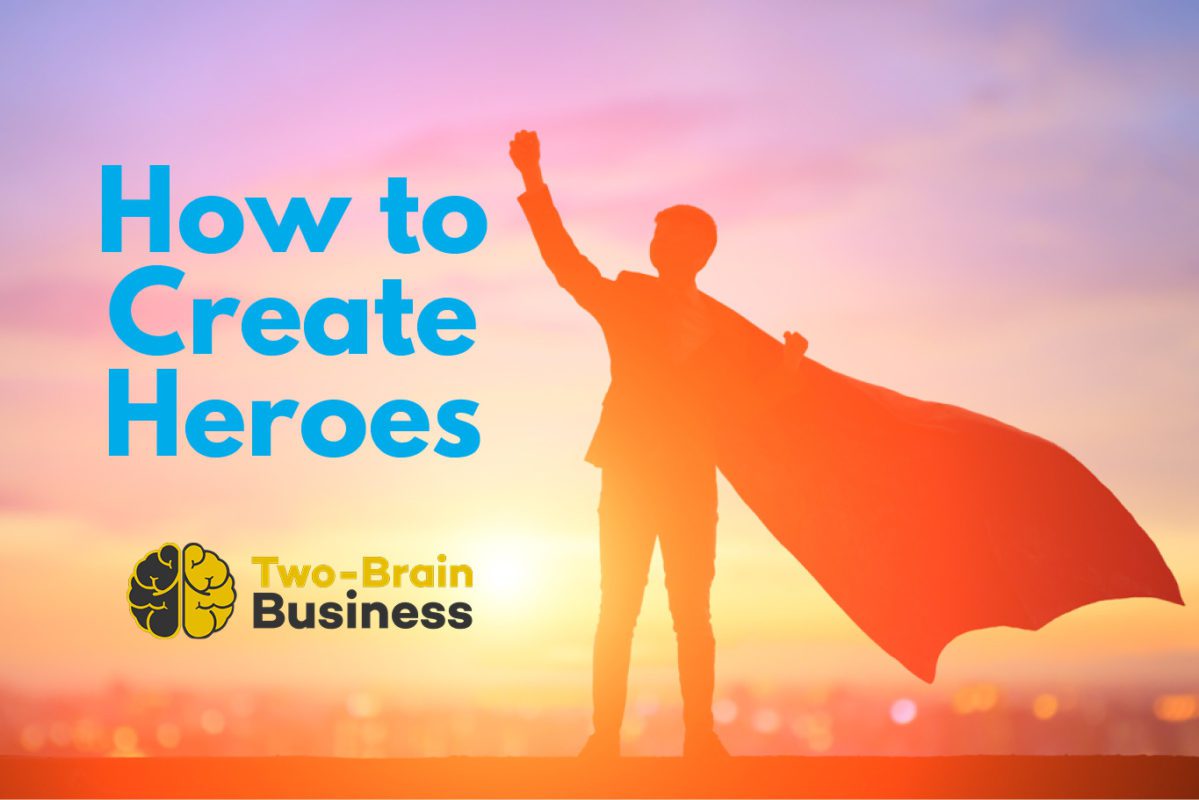When you were a kid, you had heroes.
They came from books. Or sports. Or movies. Or your family.
These heroes were models for you. You were brave because Sir Lancelot was brave. You were smart because Nancy Drew was smart. You practiced because Michael Jordan practiced. You would slip into the body and mind of your heroes and become them. Mine included Sherlock Holmes, Wayne Gretzky and, later, Lance Armstrong.
But as you grew up, you lost your heroes. The lens of experience taught you that no one is perfect. The news highlighted flaws in your heroes. Your adult mind is more skeptical. And you stopped sharing your admiration for people out of fear that one of your friends would say:
“You like HER!?? You’re crazy: she cheated on her first two husbands!” Then they’d look at you funny.
You know the old adage: “Never meet your heroes.”? It’s true. You should never meet your heroes, because you’ll find a flaw in them, and that tiny flaw will undermine all the great things about them. Maybe that great scientist drinks too much, or that incredible athlete cheated on his taxes. Whatever the reason, we lose our heroes as we grow up. And that’s a huge problem, because when we lose our heroes we lose our models for success.
One of the biggest reasons people fail to lose weight, or fail to exercise properly, or even fail at business is that they don’t have models for success. They don’t have heroes.
The greatest value of the CrossFit Games isn’t to crown the Fittest on Earth. It’s to create heroes. It’s to tell a sticky story and provide models for success.
Before 2007, it was widely held that powerlifters should never do “cardio”, because it would sap their strength. I can remember Eddie White, who won world championships in one federation or another, talking about jogging 5k every day. And other powerlifters would say, “Imagine how much stronger you could be if you didn’t jog!”
But then the CrossFit Games happened, and some athletes deadlifted 600lbs and ran a sub-6:00 mile on the same day. And then the movie “300” came out, full of ripped dudes with beards who did CrossFit instead of bodybuilding. Suddenly, we had new models for what was possible. Suddenly, people became interested in CrossFit, because we had sticky stories about its success. Because we had heroes.
People at your box wear board shorts and knee socks because of these models. They train shirtless because of these models. They do snatches, eat Zone and bring their dogs to the box because their heroes do. Hell, no one even called their gym a “box” until their CrossFit heroes did!
Heroes are important. Your clients need them to succeed at fitness, and you need them to succeed at business.
Heroes are made by stories. And without CrossFit Media around, no one is telling the stories that make the heroes that form the models for your clients.
So we–you and me–WE have to do it. Here’s how.
- In the Founder Phase, be the hero. Tell your story, especially if you had to overcome some big obstacles. If you’ve lost weight in the past, talk about it a lot. If you weren’t an athlete in high school, tell that story. If you’re a Storybrand fan (like I am), you’ve heard that “the client is the hero, and you’re the guide”. But before you have clients, you still have to tell a story. So tell yours to get the first clients.
- In the Farmer Phase, make your clients the hero. Tell their stories. Highlight their obstacles and celebrate their success. Social media posts aren’t enough. Share your YouTube videos, podcast episodes or blog posts through Social Media, but sharing a picture on Instagram doesn’t count as ‘making your clients famous’.
- Also in Farmer Phase, make your coaches the heroes. Tell their story. Highlight their knowledge.
If you need help telling stories, follow the Hero’s Journey map from this podcast episode. Not sure which phase of entrepreneurship you’re in? You can take the test here.
4. Finally, be a hero to others.
If you have any kind of public platform–if you’re an athlete, or if you open a business–everything you do is open to scrutiny by your audience. Don’t take that lightly. Even the tiny bit of fame you get from achieving something small comes with the burden to live up to your reputation.
I was at a barbecue with some “inner circle” folks from CrossFit HQ last year. There were some Games athletes at the house, and they were comparing their Instagram audiences. Each had over 20,000 followers. But the head of CrossFit Media pulled out his phone and said, “You guys are only CrossFit-famous. That’s the same as “not-famous”. You want to see ‘famous’?” And he showed them Kim Kardashian’s Instagram account, which had around 22 MILLION followers.
The Media guy was right: on a grand scale, “crossfit-famous” is about the same as “not famous”. But he missed the point: “CrossFit-Famous” means “famous in a way that our tribe cares about.” CrossFit Games success might not matter to everyone, but it matters to THEM: the people we care about. OUR tribe. OUR audience.
In your little gym, maybe even in your little town: you are the model for success. You are a hero. Live up to it.
(if you don’t have a business hero, get a mentor.)

